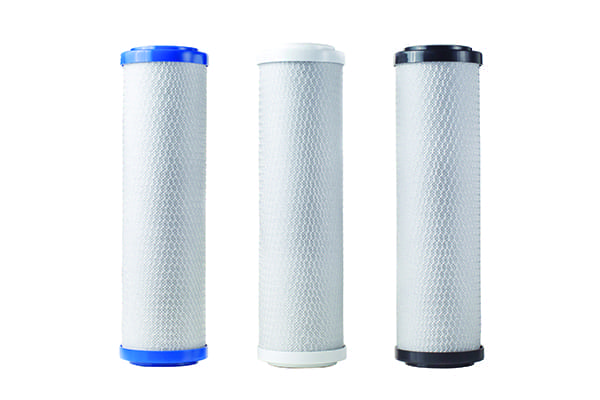Faucet attachment filters are a convenient way to remove a variety of common contaminants. The internal filter can be easily changed and is typically needed every two to three months based on usage. There is also a sensor to let you know when to change it. These filters can save you time and money by ensuring that you only use filtered water. To learn more, read our guide to water filter types. But before you buy a water filter, learn a little more about what each type can do for your home.
Reverse osmosis
A Reverse osmosis water filter removes contaminants from your tap water. It is a plastic filter that filters water for drinking and washing your car. It does a better job than a standard Berkey filter at cleaning water. These filters are made to remove chlorine, heavy metals, pesticides, rust, and other harmful particles. They also remove chlorine, herbicides, silt, and other harmful particles.
To use a reverse osmosis water filter, you will need to install a separate faucet. This faucet sits adjacent to your standard kitchen faucet. When installing this faucet, you will need to drill through the sink’s countertop and sink edge. If your faucet has an air gap in it, you’ll need a dedicated air gap faucet. If you don’t have an air gap faucet, you can use a non-air gap faucet instead. Reverse osmosis systems remove impurities from liquid, and then discharge them through an air gap or outlet tube.
Reverse osmosis systems are designed to remove 99 percent of contaminants. The APEC ROES-50 removes lead, chlorine, bacteria, copper, and fluoride. The ROES-50 includes double carbon blocks for enhanced performance. A Reverse osmosis system without a remineralization filter may cause water to taste flat. There are several different types of RO systems available, but these five-stage systems are most commonly used in residential settings.
Ion exchange
Ion exchange in water filters is a process that removes ionic contaminants from water by swapping the ions of each molecule. A typical water filter contains a long column of small beads that increases contact area with water. An anion exchange process removes dissolved calcium ions and replaces them with positively charged sodium ions. This process is highly effective, but it does not remove all the contaminants in water.
The most critical part of any ion exchange system is the resin. The resin size, shape, and material depend on the substances in the water. In some cases, a specialty resin may be required. Whether or not this is necessary will ultimately depend on the needs of the application. Ion exchange in water filter is often used to filter salts from water. If you’re concerned about your water’s pH, check to see if it needs to be treated before you install a filter.
Generally, an ion exchange water filter will remove 99% of the contaminants that are positively or negatively charged. These filters have several advantages over their competitors. They are effective at softening drinking water and improving the taste and odor of the water. Because they are easily washable, you can use them over again. Ion exchange water filters also tend to be reusable, which is convenient if you don’t drink a lot of water.
Bone char
The use of bone char in water filters has many benefits. The unique carbonaceous adsorbent is made from selected grades of animal bone. It can reduce the level of a variety of organic and inorganic species, including heavy metals. This adsorbent differs from activated carbon in two major ways. First, it has a high surface area, while bone char has a hydroxyapatite lattice that enhances its ability to trap and remove chemicals.
Another advantage to using bone char in water filters is that it has an excellent capacity to remove fluoride. This mineral can be used to reduce levels of fluoride, lead, and manganese in water. Additionally, it is effective in removing arsenic and pesticides. Other beneficial properties of bone char in water filters include reducing the levels of fluoride, lead, and manganese. Bone char can also reduce levels of arsenic, cadmium, mercury, zinc, and copper. Additionally, it can remove arsenic, pesticides, and herbicides. Other minerals adsorb to bone char include tributyl tin oxide, nuvan, malochite green, and methylene chloride.
While many people prefer using bone char in their own water filters, others find that these systems are more effective. Some DIYers order bulk bone char and use it as a filler in refillable cartridges. They may also use a Biochar Adsorber or a Slow Sand Biofilter. Others use a biochar adsorber in their third tank. A similar process is also used in refillable cartridges.
Apart from this if you’re interested to know about Water Softener Necessary in Tampa then please visit our Lifestyle category.
